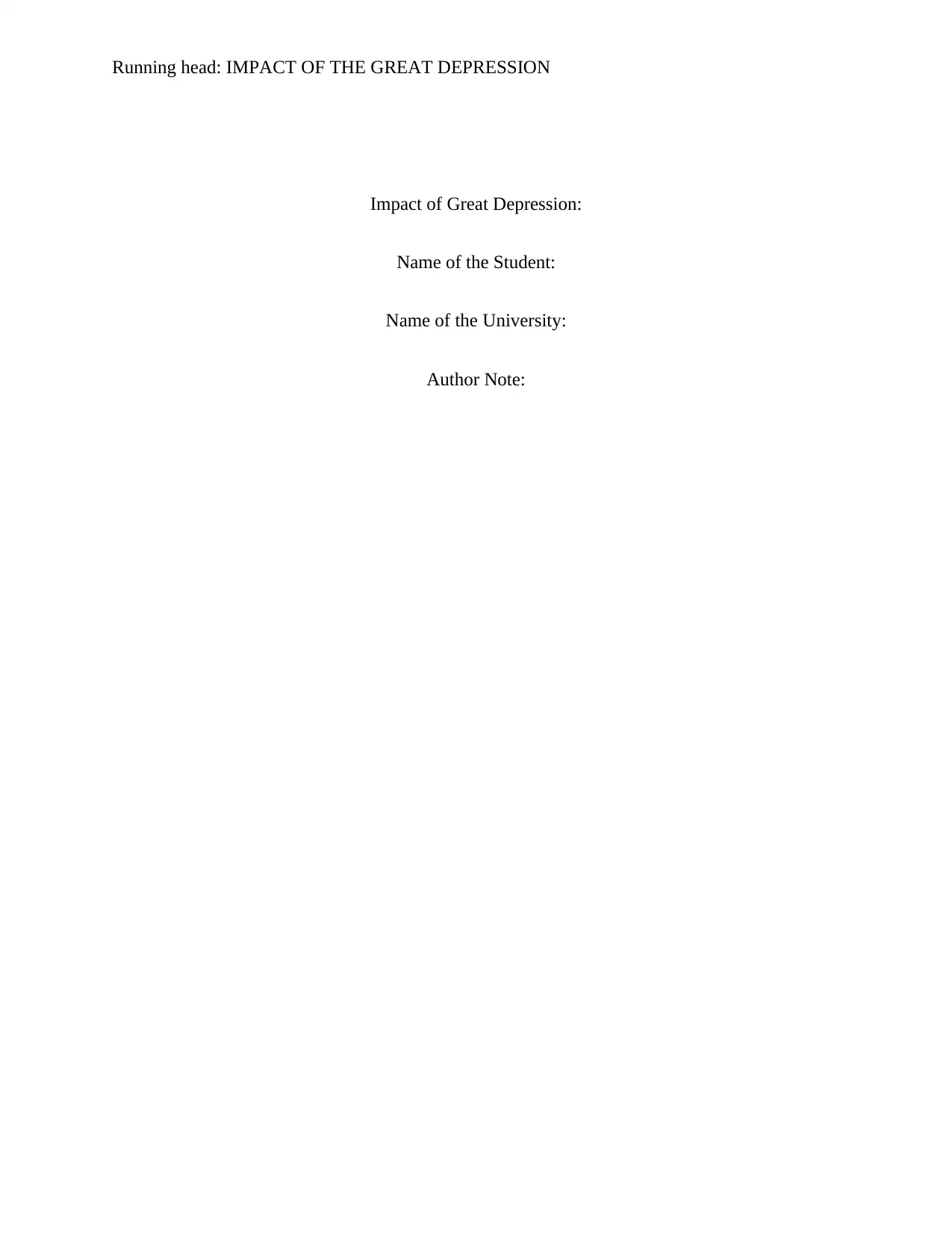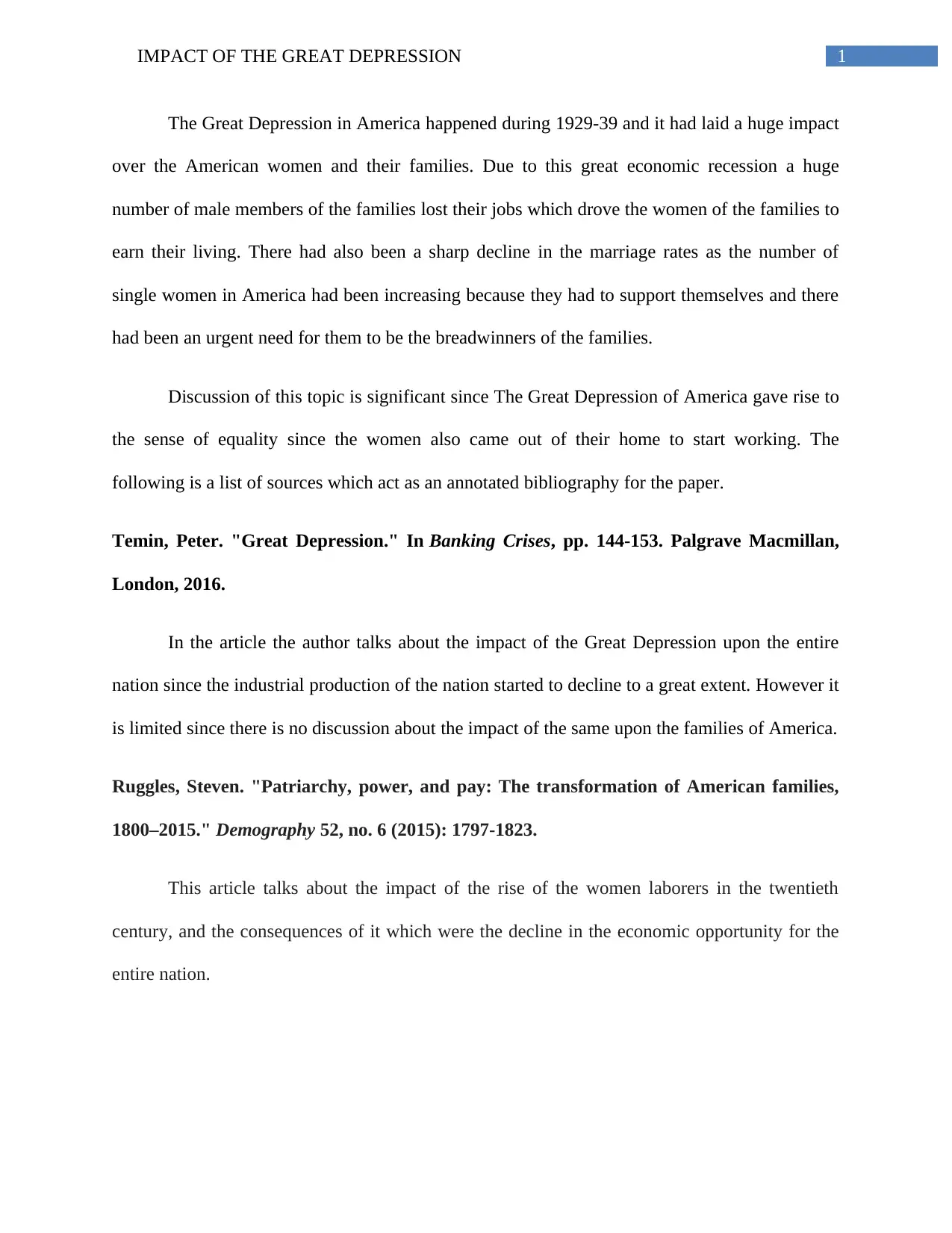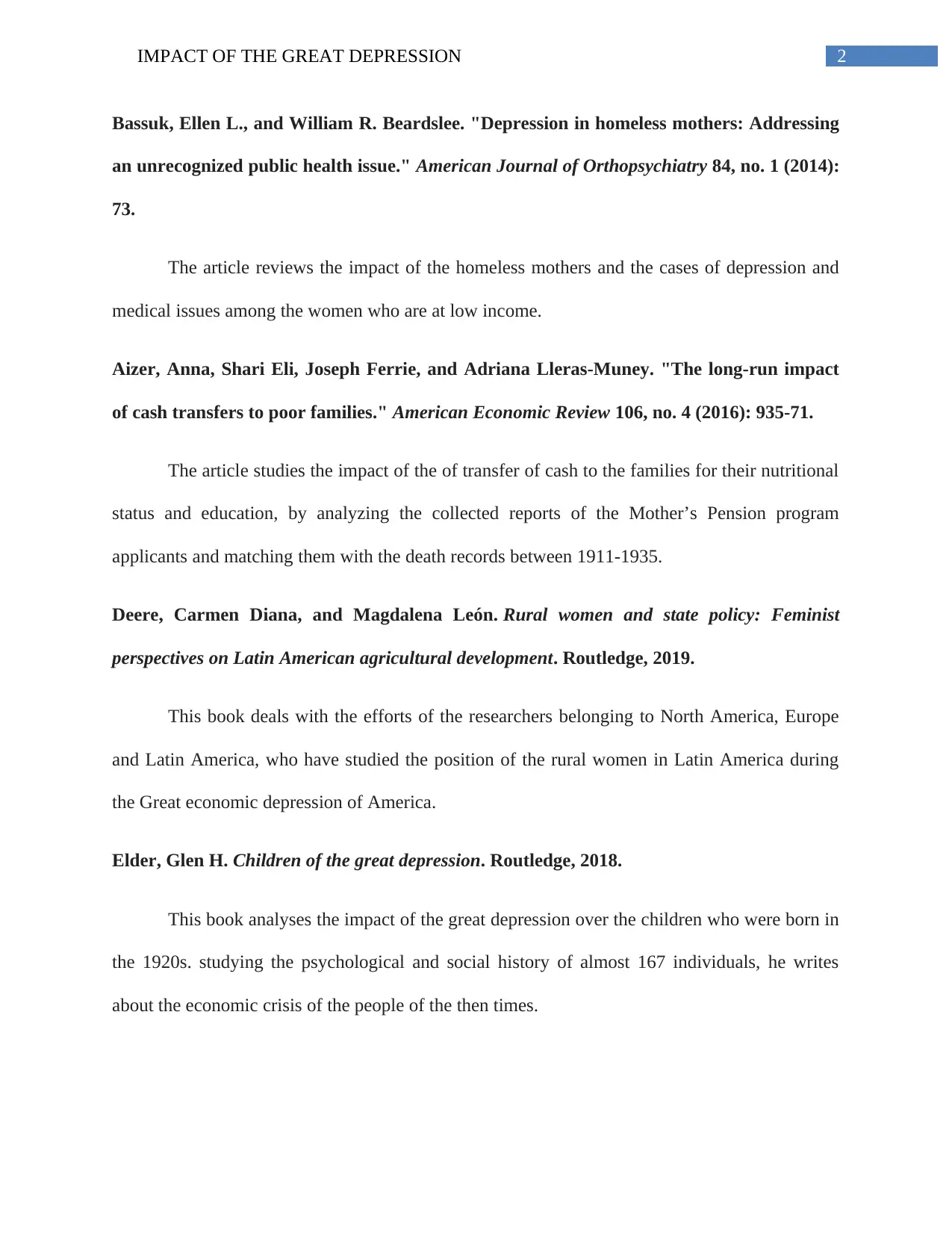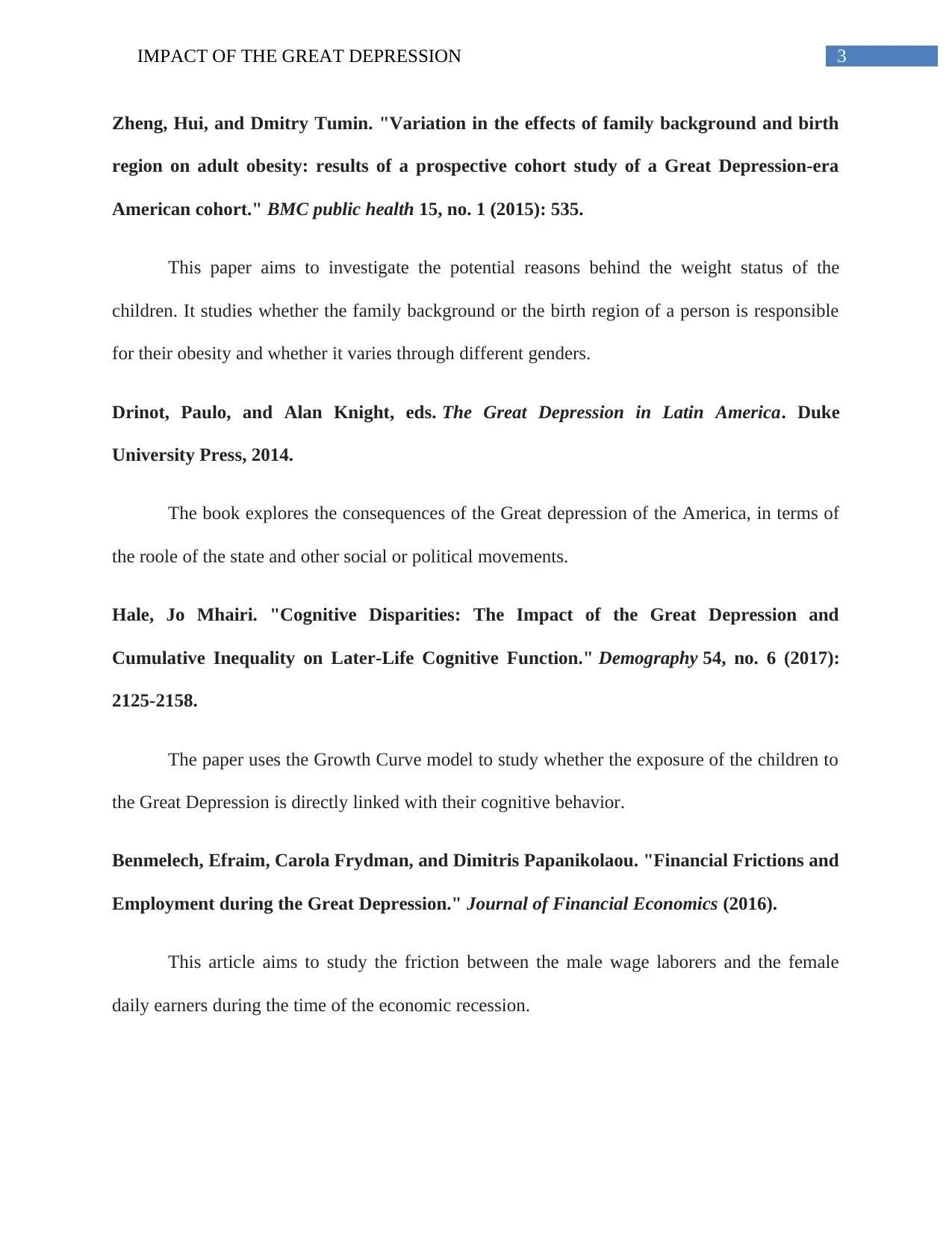The Great Depression's Impact on Women and Families in America
VerifiedAdded on 2022/08/26
|4
|860
|22
Report
AI Summary
This report analyzes the impact of the Great Depression (1929-1939) on American women and their families. The economic downturn led to widespread job losses among men, compelling women to become breadwinners and altering family dynamics. Marriage rates declined as women faced increased economic responsibilities. The report highlights the rise of a sense of equality as women entered the workforce. It includes an annotated bibliography of relevant sources, discussing the economic impact on the nation, the rise of female laborers, the impact on homeless mothers, cash transfers to families, the role of rural women, and the effects on children's psychological and social development. The sources also explore financial frictions, cognitive disparities, and the role of the state during the Great Depression. This report aims to provide a comprehensive understanding of the multifaceted consequences of this pivotal historical period.
1 out of 4







![[object Object]](/_next/static/media/star-bottom.7253800d.svg)